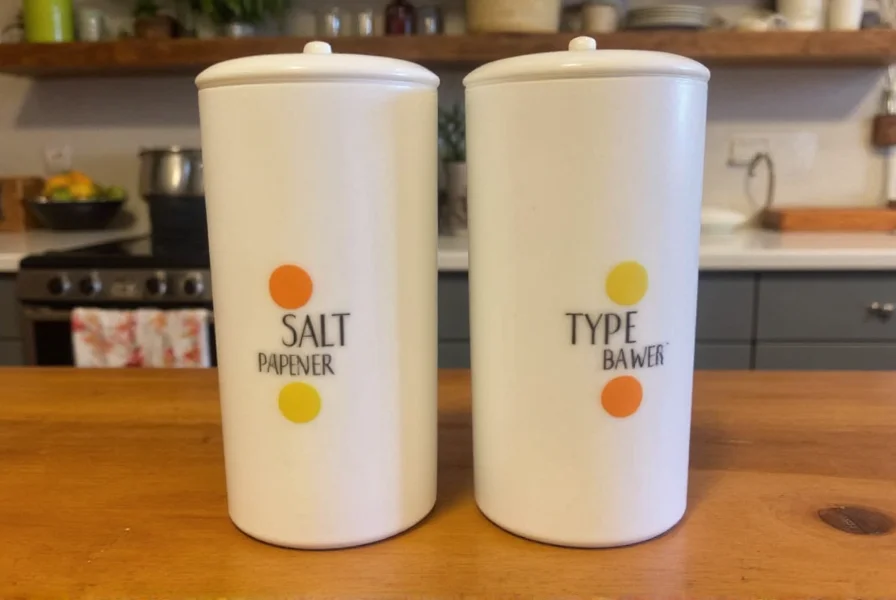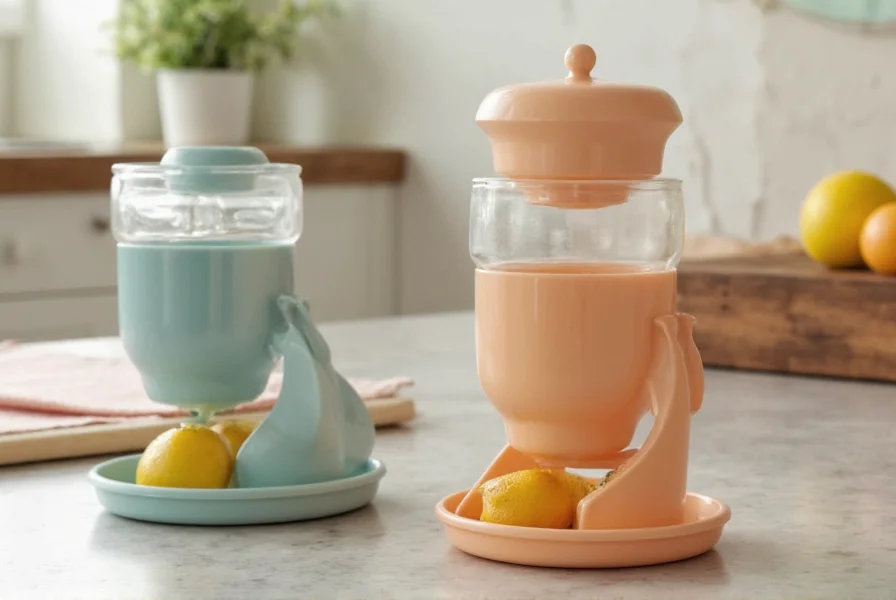Tupperware salt and pepper sets represent one of the company's most enduring kitchen accessory lines, combining functional design with the brand's signature durability. These seasoning containers have evolved significantly since their introduction, adapting to changing kitchen needs while maintaining core functionality that home cooks appreciate.
Historical Development of Tupperware Seasoning Containers
The original Tupperware salt and pepper sets emerged in the 1950s alongside the company's expansion into kitchen organization products. Early models featured the distinctive "burping" seal that became synonymous with Tupperware's airtight technology. These vintage Tupperware salt and pepper set designs often showcased the colorful plastics popular during mid-century modern design periods.
Throughout the 1960s and 1970s, Tupperware introduced several iterations with improved shaker mechanisms and more ergonomic designs. The 1980s brought sets with modular components that could be stacked or stored together. Modern versions maintain the essential functionality while incorporating contemporary design elements and advanced materials.

Key Features That Define Quality Tupperware Sets
What distinguishes authentic Tupperware salt and pepper containers from generic alternatives? Several engineering features contribute to their lasting popularity:
- Airtight sealing technology - Prevents moisture absorption that causes salt to clump and pepper to lose potency
- Adjustable dispensing mechanisms - Many models feature twist controls that regulate hole size for precise seasoning
- Stackable design - Optimizes counter and cabinet space in modern kitchens
- Dishwasher-safe construction - Unlike many ceramic alternatives, most Tupperware sets withstand regular cleaning
- Material transparency - Allows users to see seasoning levels without opening containers
Material Composition and Safety Standards
Modern Tupperware salt and pepper sets utilize food-grade plastics that meet stringent safety regulations. The primary materials include:
| Material Type | Usage Period | Key Properties |
|---|---|---|
| Polyethylene (PE) | 1950s-1980s | Durable, flexible, excellent moisture barrier |
| Polypropylene (PP) | 1980s-Present | Higher heat resistance, more rigid structure |
| Polycarbonate (PC) | 1990s-2010s | Crystal-clear transparency, impact resistant |
| Tritan Copolyester | 2010s-Present | BPA-free, maintains clarity, chemical resistant |
Current production models predominantly use Tritan copolyester, which provides exceptional clarity without BPA concerns. This material represents Tupperware's commitment to evolving with food safety standards while maintaining product functionality.
Practical Usage and Maintenance Tips
Proper care extends the life of your Tupperware seasoning containers significantly. For optimal performance of your Tupperware salt and pepper set:
- Clean components separately with mild soap and warm water - avoid harsh abrasives that scratch surfaces
- Remove shaker tops periodically to prevent salt buildup in dispensing holes
- Store with lids slightly ajar when not in regular use to prevent odor absorption
- Replace rubber seals every 2-3 years as they naturally degrade over time
- Never expose to direct heat sources which can warp plastic components
For vintage Tupperware salt and pepper set collectors, special care is needed with older models. Hand washing preserves original colors better than dishwasher use, and storing away from direct sunlight prevents fading of historic pieces.
Comparing Tupperware to Alternative Seasoning Solutions
When evaluating airtight salt storage solutions, Tupperware sets offer distinct advantages over common alternatives:
- Ceramic containers - While attractive, they lack precise portion control and often have less effective seals
- Metal tins - Prone to corrosion from salt exposure and typically offer limited visibility of contents
- Generic plastic containers - Usually lack the engineering refinements for optimal seasoning dispensing
- Open shakers - Provide no protection against moisture, leading to clumping and flavor degradation
The best Tupperware salt and pepper set models balance visibility, portion control, and airtight protection better than most alternatives. This functional superiority explains their continued presence in kitchens despite evolving design trends.
Identifying Authentic Tupperware Products
With vintage Tupperware salt and pepper set collectibility rising, distinguishing authentic pieces matters. Genuine Tupperware products feature:
- Clear "Tupperware" branding molded into the plastic
- Model numbers and manufacturing dates on bottom surfaces
- Consistent material quality without air bubbles or inconsistencies
- Patented sealing mechanisms specific to Tupperware designs
Be cautious of reproductions marketed as vintage pieces. Authentic vintage sets show wear patterns consistent with actual use rather than artificial distressing.
Troubleshooting Common Issues
Even well-maintained Tupperware salt and pepper sets occasionally present challenges:
- Clumping salt - Indicates moisture exposure; replace desiccant packet or ensure seal integrity
- Sticky residue - Caused by oil in some pepper varieties; clean with vinegar solution
- Loose shaker tops - Replace worn threads or consider newer models with improved retention
- Fading colors - Common in vintage pieces; avoid direct sunlight to prevent further deterioration

Practical Kitchen Integration
For optimal utility, position your Tupperware seasoning containers within easy reach of cooking areas but away from heat sources. Many home chefs appreciate how these sets complement other Tupperware kitchen organization systems, creating a cohesive storage solution. The compact footprint of most Tupperware salt and pepper set models makes them suitable for small kitchens where counter space is limited.
Consider filling containers with coarse sea salt and freshly ground pepper for maximum flavor impact. The airtight design preserves these premium seasonings better than open containers, extending their shelf life while maintaining optimal texture for dispensing.
Frequently Asked Questions
Are Tupperware salt and pepper sets microwave safe?
Most Tupperware salt and pepper sets are not designed for microwave use. The small components and specialized shaker mechanisms can be damaged by heat exposure. These containers serve as storage solutions rather than cooking vessels.
How do I prevent salt from clogging the shaker holes?
To prevent clogging in your Tupperware salt and pepper set, include a few uncooked rice grains in the salt container. The rice absorbs moisture while remaining too large to pass through the shaker holes. Alternatively, ensure your salt container remains properly sealed to prevent moisture exposure.
Can I purchase replacement parts for vintage Tupperware sets?
Replacement parts for vintage Tupperware salt and pepper sets are limited through official channels. However, collector communities and specialty retailers sometimes offer compatible components. For newer models, contact Tupperware customer service about available replacement parts for your specific product line.
Do Tupperware seasoning containers work well with coarse salts?
Yes, most modern Tupperware salt and pepper sets feature adjustable shaker mechanisms that accommodate coarse salts like sea salt or kosher salt. Simply widen the dispensing holes to match your preferred salt texture. Vintage models may require larger hole sizes for coarse varieties.
How long do Tupperware salt and pepper sets typically last?
With proper care, quality Tupperware salt and pepper sets can last 10-15 years or longer. Factors affecting longevity include frequency of use, cleaning methods, and exposure to heat or sunlight. The airtight seals typically require replacement every few years for optimal performance.










 浙公网安备
33010002000092号
浙公网安备
33010002000092号 浙B2-20120091-4
浙B2-20120091-4